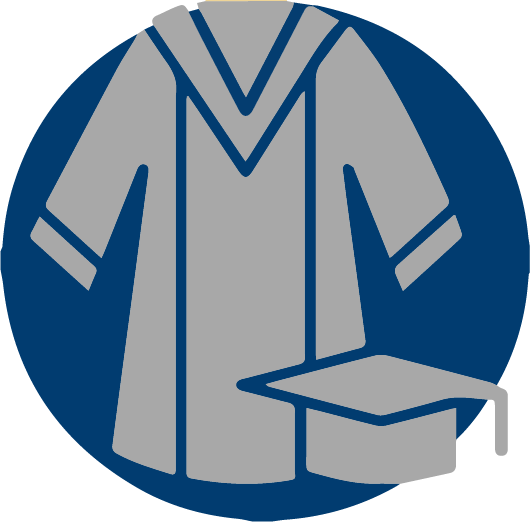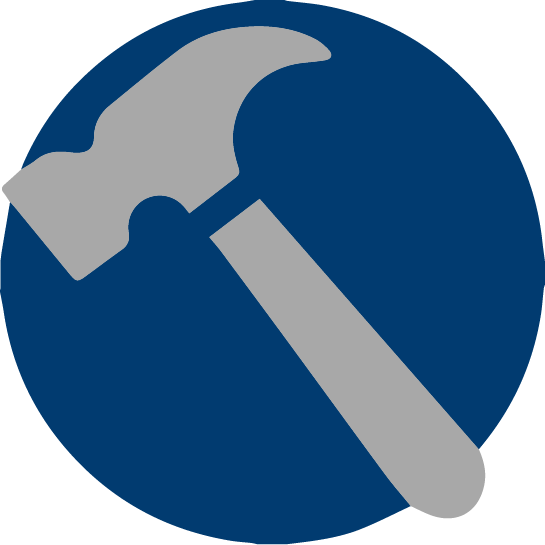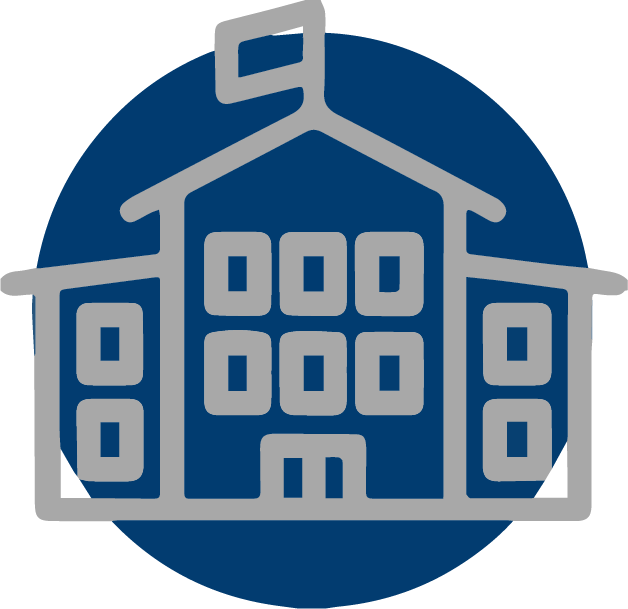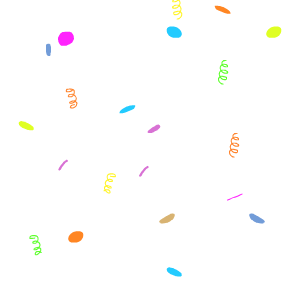Historical Highlights of the School
We invite you to flip through the digital pages of our recently published book “Minds and Motion: Celebrating the People and History of the UBC School of Kinesiology,” which relays the remarkable history of the School, the community that built it, and all that has been achieved over the years. This beautiful hardcover coffee table book is available for purchase.
Order your copy through the UBC Bookstore.
Legend:

– Alumni Achievements
|

– New Buildings
|

– School Directors
|

– School News
|
UBC’s first gymnasium opened in 1929. It served as the headquarters of the Department of Physical Education from its inception in 1946 until the completion of the War Memorial Gym in 1951, and later as the “Women’s Gymnasium” until it was dismantled in 1970 to make way for the expansion of the Buchanan Building.
1929
Opening of UBC’s first gymnasium.
1939
UBC Senate approves plans for a Department of Physical Education, but the outbreak of World War II halts all plans for academic expansion at UBC.
From the start, UBC’s foundational emphasis was on the well-rounded student; a person of high scholastic attainment and physical health, moral force of character, and ability to serve, work with and lead others. In 1939, a special UBC Senate committee voted to:
- Form a Department of Health and Physical Education
- Make improvements to UBC’s stadium and gymnasium, and
- Establish compulsory physical education requirements for 1st and 2nd year students.
The certainty of a return to war brought plans to an abrupt end. However, this later strengthened the University’s desire to establish a Department of Physical Education, resulting in swift actions to inaugurate a degree-granting program, scarcely a year after the conclusion of the Second World War.
In 1945, UBC alumnus, past varsity athlete, Olympian and veteran, Robert F. Osborne became the director of the Department of Physical Education. He was well suited to lead the development of a new department whose specialized PE teachers were in great demand across the province, and to oversee the management of UBC’s varsity teams. He went on to implement the 4-year degree program in Physical Education in 1946, making UBC one of only three schools in Canada to provide such a degree.
1945
Bob Osborne is appointed as director for a proposed Department of Physical Education.
1946
UBC Senate approves the inclusion of a Department of Physical Education in the Faculty of Arts and Science. Pictured above are the inaugural faculty members.
 1946 – Bachelor of Physical Education (BPE) is established
1946 – Bachelor of Physical Education (BPE) is establishedThe first courses at UBC that led to a degree in physical education began in the fall of 1946. The Department of Physical Education became a unit of the Faculty of Arts and Science and offered courses leading to the four-year degree of a BPE.In 1946, the Physical Education program was divided by gender, requiring an even number of male and female instructors. Although gender equity was a priority in theory, it didn’t always follow in practice. Consequently, Marianne Henderson was appointed as the head of the women’s program. Other female faculty appointees included Jean Carmichael, Isobel Clay and May Brown (Adams).
In the 1949 spring congregation ceremonies, a total of 38 students became the first UBC graduates to earn the degree of Bachelor of Physical Education. Most returned to UBC in the fall to begin a year of teacher training within the Department of Education. From there, they were deployed to schools in British Columbia’s Lower Mainland, Vancouver Island, Okanagan and West Kootenay regions.
1949
38 UBC students become the first recipients of the Bachelor of Physical Education degree.

1951
The 3000-seat War Memorial Gym was built at a cost of $750,000 and was inaugurated with a UBC Thunderbirds basketball game, followed by a traditional student “sock dance”.
Of the 1,680 UBC students who served in the Great Wars, 247 lost their lives. The interest in securing a living memorial to fallen student-soldiers and the desperate need to expand physical education facilities came to fruition in 1946. Today, the building stands not only as a monument to the fallen, but to the initiative and determination of students and community who together raised the funds for this ambitious project. Radical, modernist and avant-garde were all adjectives used to describe the building. Designed by architect Ned Pratt, famed UBC alum and Olympic rower, the building received the prestigious Massey Silver Medal design award in 1951. The original plans included physiotherapy facilities, sauna, massage room, six bowling alleys, a restaurant and an alumni lounge.
The gym has served as an important space of commemoration at the annual Remembrance Day Ceremonies, acting as a physical and symbolic link between the present day UBC community and the generations that came before.
The School of Physical Education was officially established by the UBC Board of Governors with responsibilities for Athletics and Intramurals as well as the BPE program.
1952
The Department of Physical Education becomes the School of Physical Education and assumes greater autonomy over its operations and planning.
1957
Under the direction of Dr. Howell, with the full support of director Bob Osborne, the UBC School of Physical Education established the first Masters degree program in the British Commonwealth.
 1957 – Master of Physical Education (MPE) is established
1957 – Master of Physical Education (MPE) is establishedDr. Maxwell Howell’s arrival at UBC in 1954 sparked a turning point in the evolution of the School of Physical Education and the development of sports studies and sports science as academic disciplines. Howell made his lasting mark on the School by becoming the first faculty member to conduct academic research. His inaugural study tested the fitness and motor ability of elite swimmers and undertook electrocardiograms both before and after training performances, in partnership with the Faculty of Medicine.
In response to the expansion of community-based recreation programs and facilities throughout the province, the School changed its name and mandate in 1960 to the UBC School of Physical Education and Recreation. Under the direction of newly appointed faculty member, Dick Ramsey, work began to establish the foundation for a new program that would eventually lead to the degree of Bachelor of Recreation Education, in which the first students registered in the fall of 1965. Four years later, UBC Congregation ceremonies included the program’s first graduating class.
1960
The name of the School was changed to the School of Physical Education and Recreation.
1961
May Brown, a highly respected force at UBC as faculty member and grass hockey coach, becomes the first woman to receive a Master of Physical Education degree.
May Brown (nee Adams) began her UBC career in 1947 as a teacher and coach of the women’s grass hockey teams. She was a very popular teacher and mentor to female students. And under Brown, UBC was consistently victorious in the highly competitive Greater Vancouver Senior Women’s Grass Hockey League.
In 1961, May Brown became the first woman ever to receive a master’s degree in physical education at UBC. Twenty-six years later she was conferred the degree of Doctor of Laws, honoris causa, in recognition of her vast contributions to public service, youth and education.
In 1963, the School of Physical Education and Recreation was removed from the Faculty of Arts and Science, and was integrated into the Faculty of Education. By 1969, the undergraduate program branched into two degree options: one for students interested in teaching physical education and another for those interested in studying the science of physical movement.
1963
The School of Physical Education and Recreation moves to the Faculty of Education, where it remains today.
1967
Faculty member, Nestor Korchinsky is known as the visionary behind the UBC intramural sport and recreation program that became the envy of other universities and the model of student engagement across North America.
 1965 – Bachelor of Recreation Education (BRE) is established
1965 – Bachelor of Recreation Education (BRE) is establishedNestor Korchinsky came to UBC in 1967 to serve as a coach and teacher of physical education. He was passionate about UBC but when he saw the empty Varsity Stadium seats was determined to inject some soul into the campus. Thus was born the UBC Intramural Sports and Recreation program.
The program was so rich and diverse that it had something to offer every student, irrespective of their athletic experience or skill level. Under his leadership, BPRE graduates Joan Pilcher-Webster and Lorne Bodin built up the recreation program as we know it today with over 10,000 students participating in annual multi-day tournaments that include the renowned Storm the Wall relay event.
In 1970, the Osborne Centre opened on Thunderbird Boulevard, and was named after the School’s long-time first director – Dr. Bob Osborne – who was an esteemed basketball player, coach, teacher and school administrator. The first phase of the centre, Unit 1, was constructed in 1970 while Unit 2 was built in 1972. Today, the facility is home to multiple kinesiology research labs, as well as the School’s outreach programs: Active Kids and Body Works.
1970
Robert F. Osborne Centre opens.
1970
Robert F. Osborne Centre opens.
In 1970, the Osborne Centre opened on Thunderbird Boulevard, and was named after the School’s long-time first director – Dr. Bob Osborne – who was an esteemed basketball player, coach, teacher and school administrator. The first phase of the centre, Unit 1, was constructed in 1970 while Unit 2 was built in 1972. Today, the facility is home to multiple kinesiology research labs, as well as the School’s outreach programs: Active Kids and Body Works.
Dr. Vertinsky is a social and cultural historian whose research is located at the centre of an upsurge of interdisciplinary interest in the body and its role in society, which is now seen as central to much contemporary thought and practice in medical science, educational practice, feminism, technology and health.
It is a subject that bridges the sciences, the humanities and the social sciences and professions. Her co-edited collections, Sites of Sport: Space and Place and Experience and Disciplining Bodies in the Gymnasium: Memory, Monument and Modernism, appeared in the spring of 2004. She has numerous publications, honours and awards and is a UBC Distinguished University Scholar.
1975
Faculty Member Professor Patricia Vertinsky – She is regarded as one of the most influential thinkers and producers in the fields relating to sports studies, cultural studies and the body/society paradigm.
1978
Bob Morford was appointed director of the School of Physical Education by UBC president, Douglas Kenny.
Bob Morford served as director of the School for over a decade. In this period, he established an environment that was favourable to research, supported professional development and advanced teaching. He ushered in kinesiology as an academic discipline through multidisciplinary and interdisciplinary perspectives. He also revised the undergraduate curricula. As a result of these changes, the School earned a new place in UBC’s academic hierarchy. Under Morford’s leadership, the School became home to an impressive roster of faculty members with wide-ranging expertise. This positioned the School of Physical Education to create a partnership with the Faculty of Medicine. Together, they established what is now known as the Allan McGavin Sports Medicine Centre in 1979.
In 1979, the School of Physical Education and Recreation established a unique partnership with UBC’s Faculty of Medicine. Three leading faculty members were jointly appointed to co-found the Sports Medicine Clinic. They were Doctors Doug Clement, Don McKenzie and Jack Taunton. These pioneers were medical doctors, kinesiologists and Olympic athletes. Originally operating from the small John Owen Pavilion on the south campus, the innovative clinic quickly became the model for other programs in North America. The School was quickly put on the map as a world-renowned leader in sport medicine, an emerging and critically important new field of study and practice. After extensive expansion and renovations, it was renamed the Allan McGavin Sports Medicine Centre in 1987.
1979
UBC Sports Medicine Centre, the first of its kind in Canada, opens as the result of a partnership between the School of Physical Education and Recreation and the Faculty of Medicine.
1986
Wheelchair athlete Rick Hansen becomes the first wheelchair-user student to graduate with the BPE degree.
At the spring convocation ceremony in 1986, world-renowned wheelchair athlete received his Bachelor of Physical Education, and was the first wheelchair-user student to do so. In 1987, Hansen received an honorary Doctorate of Laws in 1987 in recognition of his Man-in-Motion World Tour; a 40,000 km wheelchair marathon. The Tour raised $26 million and changed the way people with disabilities were perceived. The Rick Hansen Foundation (RHF), established in 1988, is part of its legacy.
Rob Schutz enrolled in UBC’s School of Physical Education in the fall of 1957. After completing a PhD in mathematical modelling and statistics in 1971, Schutz returned to UBC to teach courses in statistics and measurements. He quickly became a pioneer among research-focused faculties, and was a driving force behind the School’s curriculum change and shifting the research focus onto quantitative analyses.
Under Schutz’s directorship, the School’s evolution towards exercise science took big strides, including the realignment of the Master of Physical Education degree into 3 different programs, and approval of the School’s now-prestigious PhD program.
1990
Robert Schutz is appointed as director.
1994
The School name changes to the School of Human Kinetics.
With the School’s academic spectrum and mandate significantly transformed from its origins in the post-war era, the name of the school was changed to the School of Human Kinetics, which better reflected the breadth of programs and interests in the School. During the same year, the MPE degree was changed to the MHK degree. Two additional Masters degrees (Master of Arts and Master of Science) were also initiated, offering opportunities for original investigation at the Masters level. The School’s doctoral program also began in 1994.

1994 – Bachelor of Human Kinetics (BHK)
1994 – Master of Human Kinetics (MHK)
1994 – Master of Arts (in HK) & Master of Science (in HK)
1994 – PhD
Born in Winnipeg, Houston completed his undergraduate and master’s degrees at the University of Toronto and his PhD at the University of Waterloo, where his research interests centred on muscle function and metabolism. Despite being the first non-UBC graduate to assume the directorship, Houston clearly had both the skill and determination to continue nurturing the aspirations of Schutz and Morford to explore new horizons.
1996
Dr. Michael Houston replaces Robert Schutz as the fourth director of the School of Human Kinetics, and is the first Director to not graduate from UBC.
1999
Dr. Peter Crocker becomes the fifth director of The School of Human Kinetics.
Sport psychologist Dr. Peter Crocker was appointed to a five-year term as director of the UBC School of Human Kinetics in 1999 and was instrumental in the development of a strategic plan that focused the School’s mission on physical activity and health. He was also responsible for the appointment of nine research-oriented faculty who attracted substantial government research funding. He currently oversees the Exercise and Sport Psychology Laboratory, which combines a variety of interrelated areas within the realm of sport, exercise, and health psychology
The Changing Aging Fitness Program was a fitness program for older adults designed by Sonya Lumholst-Smith, Athletics Coordinator of Campus Recreation and Fitness, in 1997. The program’s inaugural year saw 16 like-minded community members ranging in age from 48 to 84 participate in Changing Aging, and by the next year the program had expanded to 128 participants in 19 different classes. They were all taught by UBC physical education students who had received specialized certification as trainers from experts in exercise physiology for older adults. Acquired by the School in 2004, the program remains a centrepiece of its Outreach Program and continues to provide important experiential learning opportunities for KIN students.
2004
The School acquires the Changing Aging program from the Department of Athletics & Recreation.
2004
Dr. Bob Sparks becomes the sixth director of the School of Human Kinetics.
Bob Sparks arrived at UBC in August of 1980, and began his 37-year academic career with a full-time post that consisted of a combination of 50% assistant professor in the School of Physical Education and Recreation, and the other 50% as the University Diving Officer. Under his directorship, he acquired the Changing Aging Program and established the Co-op Learning program for undergraduate students.
Bob served 11 years as director, during which time his collegial leadership resulted in a unified strategy to usher the School on the final leg of a decades-long journey into the upper echelon of kinesiology learning and research in Canada.
In 2008 Professor Sparks began an engagement process with students and faculty to change the name of the School, an initiative that proved to be a lengthy and at times contentious undertaking but one that eventually garnered wide support of alumni and students alike. The name change to the UBC School of Kinesiology was approved by Senate, signalling an important juncture in the School’s decades-long evolution.
The degree “Bachelor of Human Kinetics” became the “Bachelor of Kinesiology” (BKin) and the degree “Master of Human Kinetics” became the “Master of Kinesiology” (MKin).
2012
The School name changes to the School of Kinesiology.
2014
The Active Kids Program.
 2012 – Bachelor of Kinesiology (BKin)
2012 – Master of Kinesiology (MKIn)
2012 – Bachelor of Kinesiology (BKin)
2012 – Master of Kinesiology (MKIn) Originally a long standing gymnastics program operated by the School, the program had grown into the Active Kids program by 2014. This expansion also saw significant success in the next few years as it branched out to include a diverse range of both community engagement and student engagement initiatives, including physical activity, physical literacy, and sport specific programming and events as well as collaborations with Kinesiology academic courses and research portfolios.
After an extensive international search, Robert Boushel was appointed as director of the UBC School of Kinesiology on June 1, 2015. An internationally recognized scholar, Boushel received a doctorate in anatomy and physiology from Boston University and began a teaching career at Concordia University, followed by appointment within the Department of Biomedical Sciences at the University of Copenhagen. Prior to assuming his role as the School’s seventh director, he served as professor and chair in physiology at Swedish School of Sport and Health Sciences.
2015
Dr. Robert Boushel becomes the seventh director of the School.

2016
Indigenous Studies in Kinesiology is established.
 2016 – Graduate Certificate in High Performance Coaching and technical Leadership (HPCTL)
2016 – Master of High-Performance Coaching and Technical Leadership (MHPCTL)
2016 – Graduate Certificate in High Performance Coaching and technical Leadership (HPCTL)
2016 – Master of High-Performance Coaching and Technical Leadership (MHPCTL) Indigenous Studies in Kinesiology (ISK) is designed to introduce the UBC Community to Indigenous understandings of health and wellbeing and to provide comprehensive insight into the complex social, cultural, historical, and economic factors that shape healthy living within Indigenous communities. Working in partnership with Indigenous communities, ISK aspires to create an interdisciplinary research space where undergraduate and graduate students, faculty and community scholars work collaboratively to explore the relationship between Indigenous physical cultures, physical activity, health and wellbeing. Projects emerging from this stream use a community-based approach that builds on community strengths to produce knowledge that is both culturally responsive and relevant.
The Chan Gunn Pavilion, a new facility for the UBC School of Kinesiology and the UBC Faculty of Medicine, opened on May 15th, 2018. The building replaces the John Owen Pavilion as the new home of the Allan McGavin Sports Medicine Clinic led by Dr. Michael Koehle and continues the legacy of collaboration between the Faculty of Medicine and the School of Kinesiology. The building, which is also home to the School’s Integrative Human Physiology Lab led by Dr. Bill Sheel, includes rehabilitation space, gym and labs for research into movement mechanisms, injury recovery strategies and optimal exercise training for people with cancer and other chronic diseases. This was made possible by generous donations from Dr. Chan Gunn and Jack and Darlene Poole and a substantial award from the Federal Infrastructure Fund.
2019
The Bachelor of Kinesiology (BKIN) curriculum is updated.
After a 5-year review, that involved input from students, alumni, employers, staff, and faculty, changes were made the BKIN curriculum. Three new streams were introduced: Neuromechanical and Physiological Sciences, Social and Behavioural Sciences, and Multidisciplinary Science.Together, these three streams help to define the broad and diverse areas of specialization that are a part of our program. The streams also reinforce the fact that students at UBC get a well-rounded education, studying kinesiology from the cellular to the societal level.
For the past three years, changes have been made to the MKIN curriculum. Two new streams were introduced: Performance and Coaching Sciences and Clinical Kinesiology. These streams will help prepare students for employment in coaching, sport-science support or work across a range of health settings, including clinical/community/corporate health and exercise promotion and chronic disease prevention programs.
We are offering courses to meet the growing technical needs in sport performance, and exercise specialists in various health and community arenas, which will be driven by knowledge related to exercise testing and prescription, nutrition, injury prevention and behaviour change.
2021
The Master of Kinesiology (MKin) curriculum is updated.
2025
The long awaited new home of the School of Kinesiology will be located in the recently approved Gateway Building, which will stand at the entrance of UBC and invite people into the campus heart. It aims to inspire a feeling of well-being and home to those who enter it.
The new home of Kinesiology will co-locate and consolidate teaching, research and administrative space for the School of Kinesiology and the School for Nursing, the UBC Integrated Health and Wellbeing Services and the UBC Health Team-Based Primary Care Teaching Clinic Prototype. The building will have a mix of space-types ranging from wet labs, dry labs, clinical spaces, lecture theatres and classrooms, gym and fitness facilities as well as office and administrative areas. Overall, the building will convey that UBC is a place of innovation, sustainability, leading-edge research, and forward-thinking ideas.





































